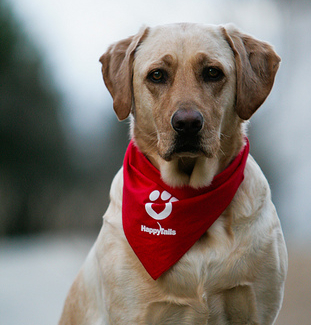|
I recently made the decision to volunteer with Gabriel’s Angels, a Phoenix therapy group supporting at risk youth. But first, there is the therapy dog registration process. There’s a bit of work that goes into it – you can’t just mail in a form and check and get your shiny badge. Oh no.
Therapy teams are registered as a team – dog plus handler. Once we’re certified, Nala and I will only be able to volunteer together – another person can’t take her unless they are registered with Nala, and I can’t go with another dog unless I’m registered with that dog.
So, how to get registered?
There are many good organizations who will register a dog therapy team. Choosing the right one is a topic for another blog post. But once you have, you can sign up for a therapy dog training course or buy the manual and study at home. That’s the way Nala and I are going. This manual is nothing you can just whip up on a copy machine. It is 200 pages of what commands a therapy dog must be able to perform and what kinds of situations therapy teams may go into (hospitals, domestic violence shelters, hospice, etc.). It goes in depth, like the overview of different illnesses you might see, from dementia to bipolar disorder to vision or hearing problems, and how these might affect a visit.
Then there’s the evaluation. Dog therapy teams must be evaluated by an official to make sure they can handle situations encountered in therapy work: other dogs, rough handling, loud noises, wheelchairs, and basic obedience. For the most part, we’ve got this down. Nala will ignore a toy or treat if she’s told to “leave it,” will sit and stay beautifully, and shake hands and high-five on command. But she’s afraid of wheels. Yep, my guard dog is afraid of wheels. You know, the kind you see on strollers and wheelchairs and the like. I’m not sure how to train that out of her. I can take her to a dog park for socialization, but what am I supposed to do - call a nursing home and ask, “Can we come spend some time around your residents so she stops barking at them?” Right. This should be fun.
Once that’s all done, there’s paperwork. You have to fill out certain forms and have your dog examined and given a clean bill of health by a veterinarian. The forms include a review of the information in the manual, a questionnaire about your dog and photos for the badges you and your dog will receive. And depending on where you’re volunteering, there may be additional paperwork, such as references.

Right now we’re in the prep stage. I’m more than halfway through the manual, and I’m training Nala for “heel” and to walk on a loose leash. You would think we’d have that one down by now, but until now the loose leash has only worked when she’s tired. (Works great then!)
We’ll keep you posted on how the therapy dog training goes. In the meantime, wish us luck! And if you've been through the process and have tips to share, we'd love to hear them.
If you liked this, you may also like:
Gabriel's Angels founder shares the power of a dog
5 common puppy training mistakes
Dog training with hand signals
Photo by Marvin Kuo on Flickr.
|